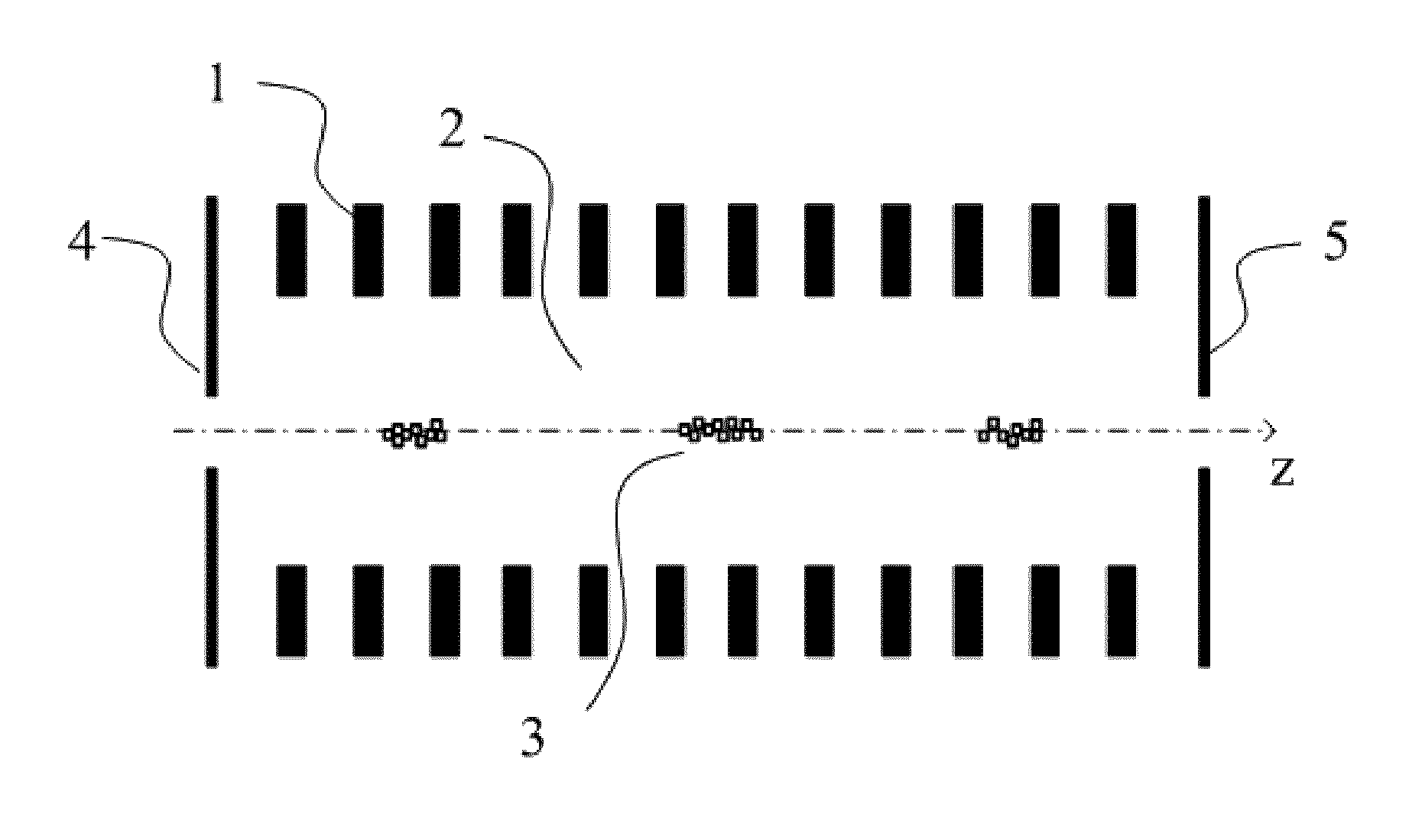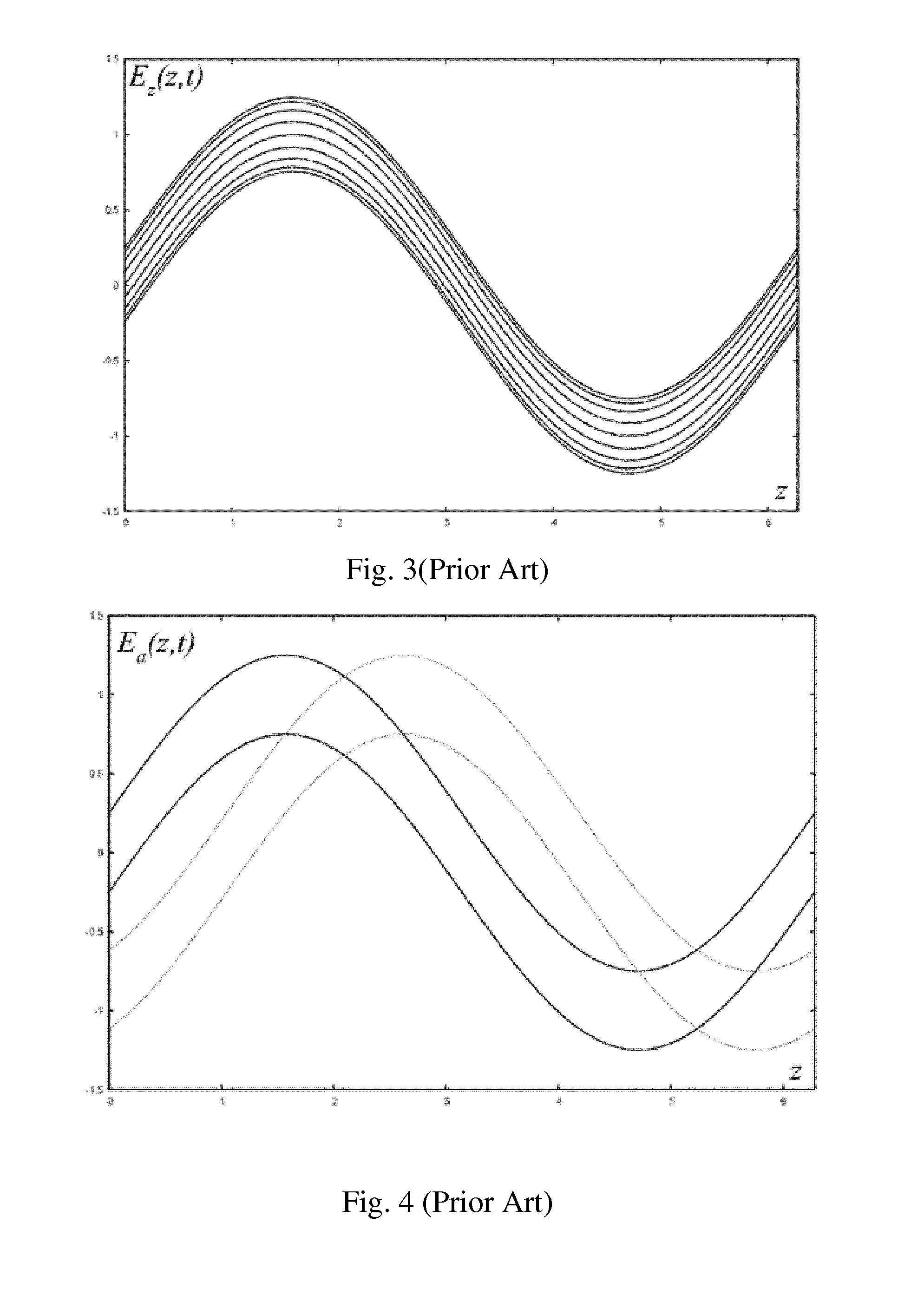Device for manipulating charged particles via field with pseudopotential having one or more local maxima along length of channel
a charge particle and field technology, applied in the field of charge particle optics and mass spectrometry, can solve the problems of low efficiency of charge particle transportation along the length of the channel, loss of other charged particles outside the boundaries of the channel of mass filter, and loss of other charged particles outside the channel boundary
- Summary
- Abstract
- Description
- Claims
- Application Information
AI Technical Summary
Benefits of technology
Problems solved by technology
Method used
Image
Examples
example 1
[0449]For the electrodes 1, the system of electrodes described above was used, the system consisting of periodic sequence of plane diaphragms with square cross-section (FIG. 53). Geometrical parameters and dimensions of the specified system of electrodes are shown in FIG. 69, geometrical dimensions of single diaphragm with square aperture are shown in FIG. 70.
[0450]For the supply voltage, sinusoidal supply with amplitude modulation was used. Periodic sequence of electrodes was subdivided into groups of four electrodes. The first electrodes in each group were supplied with electric voltage +U0 cos(δt)cos(ωt), the second electrodes were supplied with voltage +U0 sin(δt)cos(ωt), the third electrodes were supplied with voltage −U0 cos(δt)cos(ωt), the fourth electrodes were supplied with voltage −U0 sin(δt)cos(ωt). The fundamental frequency of sinusoidal supply was selected to be equal to ω=1 MHz, the frequency of amplitude modulation of sinusoidal supply was selected to be equal to δ=1 ...
example 2
[0451]For the electrodes 1, the system of electrodes described above was used, the system consisting of periodic sequence of alternating plane diaphragms with rectangular cross-sections (FIG. 59). Geometrical parameters and dimensions of the specified system of electrodes are shown in FIG. 72, geometrical dimensions of single diaphragm with square aperture are shown in FIG. 73.
[0452]For the supply voltage, sinusoidal supply with amplitude modulation was used. Periodic sequence of electrodes was subdivided into groups of four electrodes. The first electrodes in each group were supplied with electric voltage +U0 cos(δt)cos(ωt), the second electrodes were supplied with voltage +U0 sin(δt) cos(ωt), the third electrodes were supplied with voltage −U0 cos(δt)cos(ωt), the fourth electrodes were supplied with voltage −U0 sin(δt) cos(ωt). The fundamental frequency of sinusoidal supply was selected to be equal to ω=1 MHz, the frequency of amplitude modulation of sinusoidal supply was selected...
example 3
[0453]For the electrodes 1, the system of electrodes described above was used, the system consisting of periodic sequence of plane diaphragms, consisting of plane electrodes and providing quadrupole structure of electric field in the section of diaphragm (FIG. 55). Geometrical parameters and dimensions of the specified system of electrodes are shown in FIG. 75, geometrical dimensions of single square diaphragm consisting of four independent plane electrodes are shown in FIG. 76.
[0454]For the supply voltage, sinusoidal supply with amplitude modulation was used. The electrodes, designated in FIG. 76 as > electrodes, electric voltage was supplied opposite in phase with electric voltage supplied to the electrodes designated in FIG. 76 as > electrodes. Periodic sequence of diaphragms was subdivided into groups of four, composed of consecutive diaphragms. The first diaphragms in each group of four were supplied with electric voltage ±U0 cos(δt)cos(ωt) (the sign of > or > is selected depen...
PUM
 Login to View More
Login to View More Abstract
Description
Claims
Application Information
 Login to View More
Login to View More - R&D
- Intellectual Property
- Life Sciences
- Materials
- Tech Scout
- Unparalleled Data Quality
- Higher Quality Content
- 60% Fewer Hallucinations
Browse by: Latest US Patents, China's latest patents, Technical Efficacy Thesaurus, Application Domain, Technology Topic, Popular Technical Reports.
© 2025 PatSnap. All rights reserved.Legal|Privacy policy|Modern Slavery Act Transparency Statement|Sitemap|About US| Contact US: help@patsnap.com



